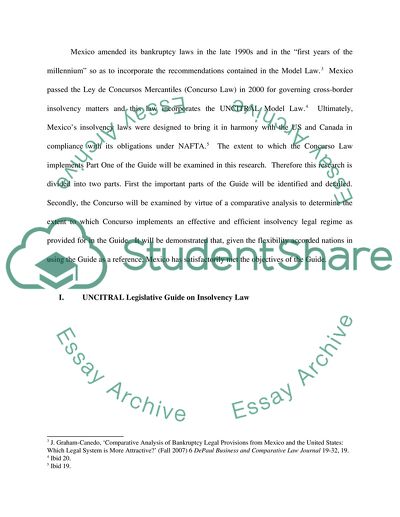Cite this document
(The UNCITRAL Legislative Guide Term Paper Example | Topics and Well Written Essays - 3500 words, n.d.)
The UNCITRAL Legislative Guide Term Paper Example | Topics and Well Written Essays - 3500 words. Retrieved from https://studentshare.org/law/1743559-comparative-insolvency-law-systems-in-emerging-markets
The UNCITRAL Legislative Guide Term Paper Example | Topics and Well Written Essays - 3500 words. Retrieved from https://studentshare.org/law/1743559-comparative-insolvency-law-systems-in-emerging-markets
(The UNCITRAL Legislative Guide Term Paper Example | Topics and Well Written Essays - 3500 Words)
The UNCITRAL Legislative Guide Term Paper Example | Topics and Well Written Essays - 3500 Words. https://studentshare.org/law/1743559-comparative-insolvency-law-systems-in-emerging-markets.
The UNCITRAL Legislative Guide Term Paper Example | Topics and Well Written Essays - 3500 Words. https://studentshare.org/law/1743559-comparative-insolvency-law-systems-in-emerging-markets.
“The UNCITRAL Legislative Guide Term Paper Example | Topics and Well Written Essays - 3500 Words”, n.d. https://studentshare.org/law/1743559-comparative-insolvency-law-systems-in-emerging-markets.


